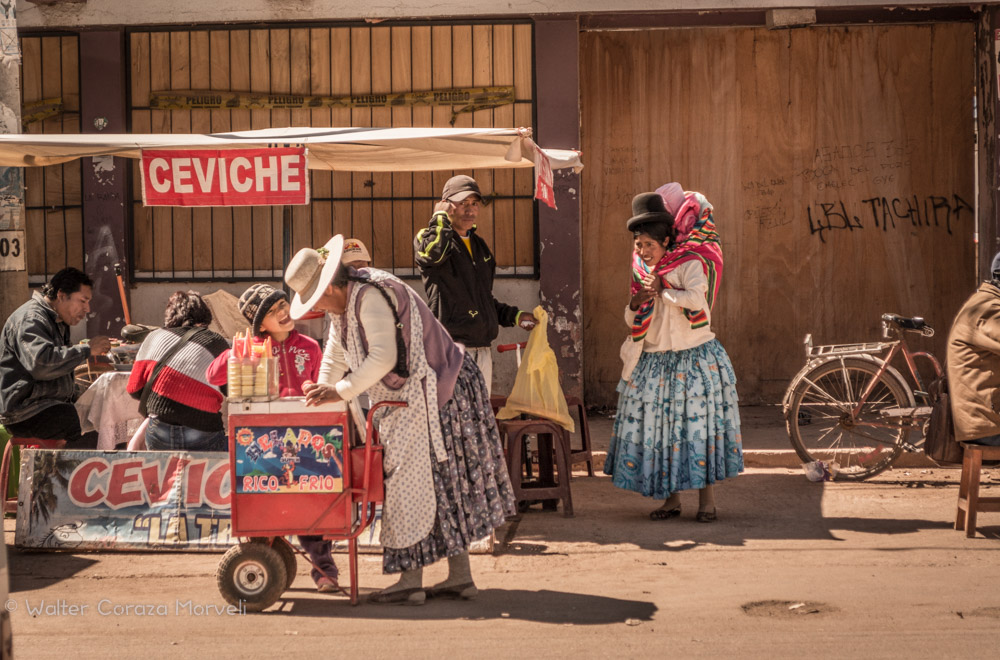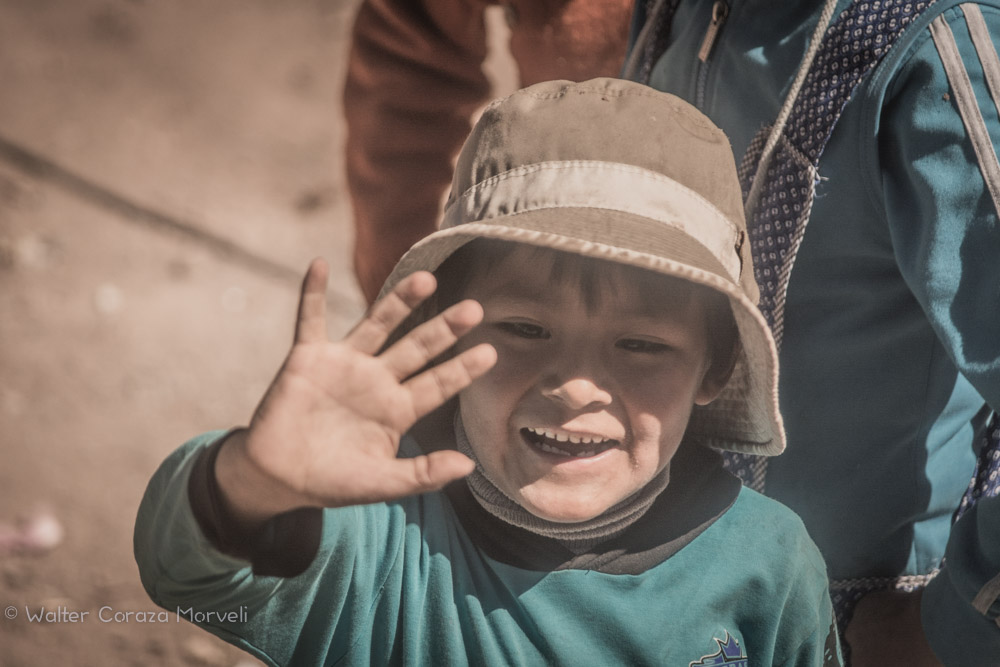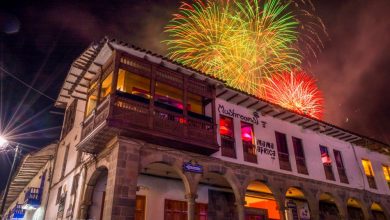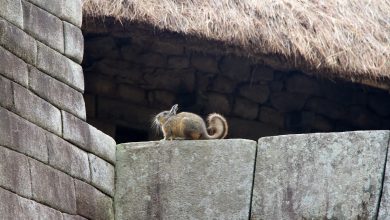Desaguadero, Where Peru and Bolivia Meet

I remember the first time I crossed the border between Peru and Bolivia in Desaguadero together with my friends Walter and David. Our trip began in our historical city of Cusco, Peru and we were on our way to La Paz, Bolivia.
It began at 10 pm when we boarded an bus of the Continental International line. It travels directly between Cusco and La Paz. Once we left our luminous city all seemed dark outside. We laughed and talked among ourselves and watched the action movies on the vehicles small screens until we fell asleep.
Dawn found us on the altiplano, the high plateau around Lake Titicaca not far from Desaguadero where the border between the two sister countries, Peru and Bolivia, goes down the small river that drains the Lake. The attendant on the bus handed out customs forms for us all to fill out with our personal details, which he then gathered up. Our luggage stayed on the bus and the forms were so that it could pass customs.

In Desaguadero we all got off the bus and formed long lines at the Migration post of each country. Everyone hoped to get through quickly as they obtained out more forms, one for each country, and had their passports or id cards in hand.
While you can fill the forms out yourself if you wish, there are people who will fill them out for you, for a small tip. They help so that the line can proceed more quickly and people not slow down as people search for a flat surface on which to write.

The forms ask the same questions on both sides of the border. What is your reason for crossing the border, how long do you plan to stay, how much money are you carrying, your address on arrival, your passport or id card number, and so on. They are simple and easily answered questions.

One of the most common problems people face on the border is not having their documents with them, their id cards, birth certificates for any children, or passports. Not having them means you get turned back and may lose your vacations as well as the cost of transport because of simple forgetfulness or lack of attention. You should always make sure you have them with you when you travel.
At the window the migration officials enter the data into the system and if everything is ok, which it almost always is, then they stamp your passport and the document, especially the part you keep if you are entering the country. You need to have care with it since you must return it on exiting the country. It usually takes about an hour to make the border crossing, although it all depends on the size of the lines.
On leaving one country and entering another you feel a bit melancholy for what you leave behind and at the same time excited for the mystery of getting to know another country.

In Desaguadero, once you have finished with one country you walk over the bridge that joins Peru and Bolivia across the river. You see well-uniformed policemen waiting and guarding the entrance to both countries. They are observing the people and their bags and back packs. If the bags are too large they wonder what they are carrying in order to stop the movement of contraband.
On each side, the flag of the respective country waves in the chill air that welcomes us and caresses our faces.
Every day, substantial traffic crosses over the borders, both for commerce and contraband. With every step through the narrow streets you see the money-changers working in their stands and the tricycles that function as taxis carrying passengers, suitcases, and other weighty loads.
The women of Desaguadero are hard workers. They hurry on their way to do what they need to do or sit at stands working and you never know for sure whether they are from Peru or Bolivia. The dress is almost the same and it used to be that all of this was Upper Peru. It just became divided into two nations.

After finishing all the paperwork you can enjoy the food offered on either side. Breakfasts await you. Or you can eat something more substantial such as lamb soup, chicken, beef, main dishes of noodles, salchipapas, ceviches, hot drinks, salteñas, bread, and so on.
The scents and sights grab you as if light when you are passing by.
I remember well the woman offering breakfasts. She was well covered because of all the cold with her skirts (polleras), sweaters, and shawls. Like the other vendors she had a small stand where she offered hot drinks, coffee, milk, quinoa, but her delicious fresh cheese stopped me in my tracks and claimed my memory. I told her it was delicious and she said “that is how it is here.” The she reminded me of the time change: “You need to turn your watch forward, young man.” “Thank you, Casera, I said” and I got back on my bus to continue my travels towards the city of Our Lady of La Paz.





